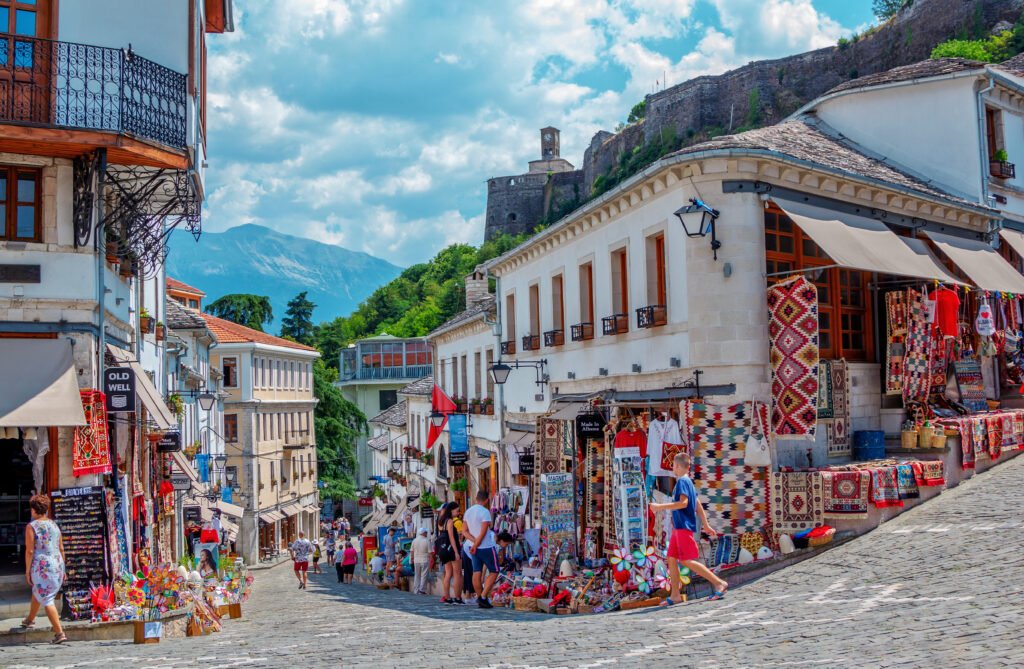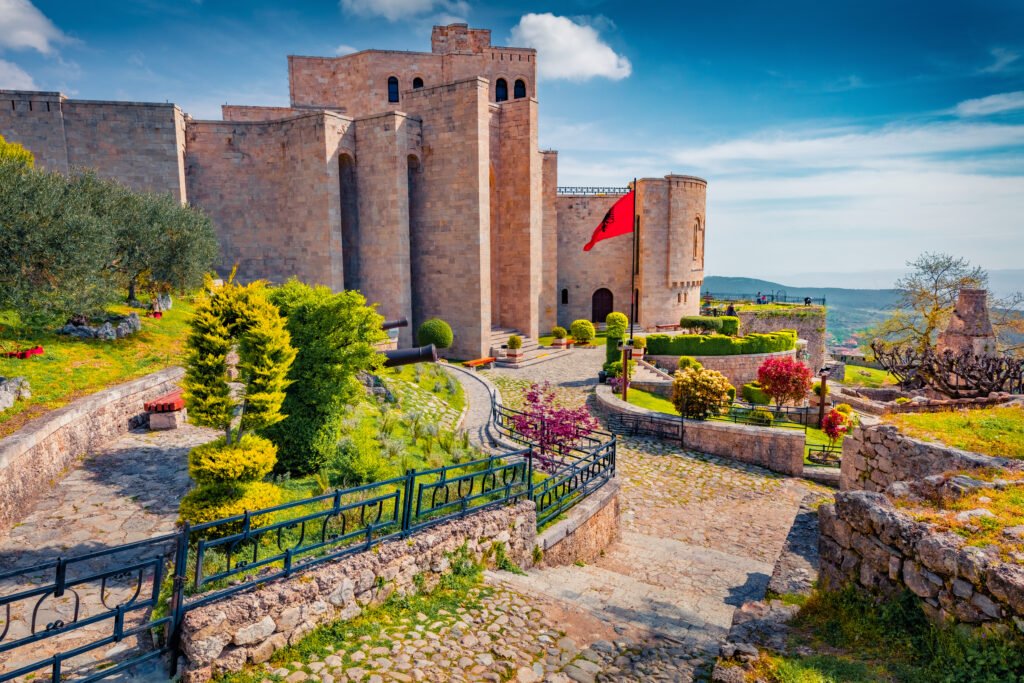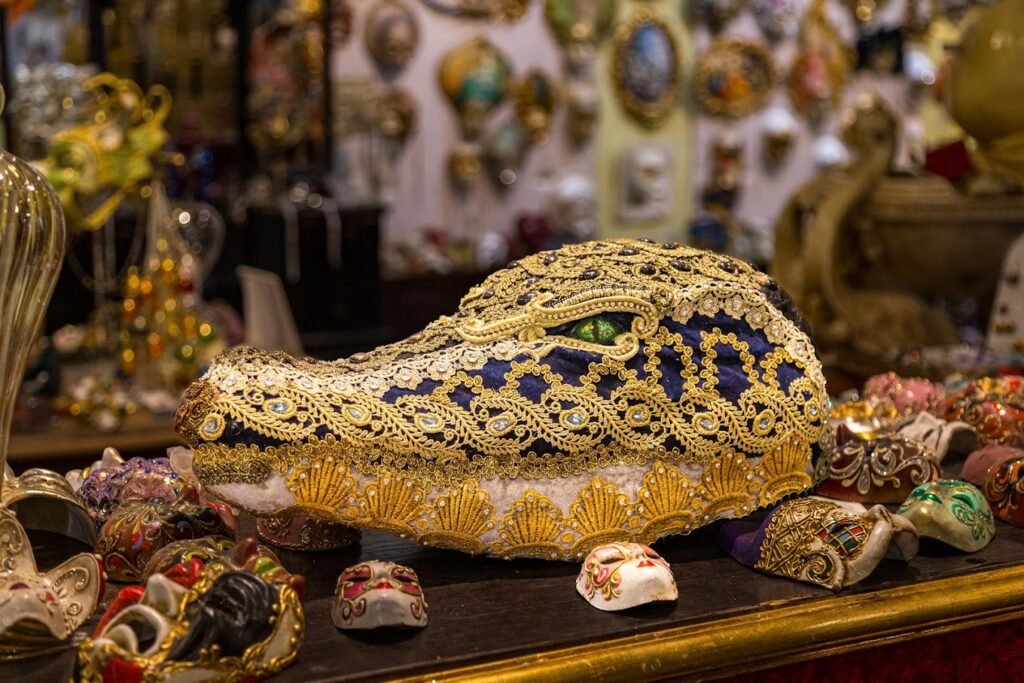
Picture a place where history isn’t just something you read about—it’s all around you. Welcome to Albania, one of Europe’s oldest nations and a linguistic treasure, a place in the Balkans where the past and present dance in harmony. Here, stories aren’t confined to old books; they come to life, echoing the ancient voices of the Illyrians, an early people who settled in the Balkans around the 2nd millennium BC, leaving a profound impact on the region’s culture and history.
In Albania, every ancient stone, every street, and every hillside is a chapter from a storybook that has been written over centuries. It’s a place where history isn’t confined to dusty shelves; it’s written in the walls of old ruins, in the air of bustling marketplaces, and through the valleys and mountains that have witnessed the passage of time since the days of Illyria.
These lands, once home to the Illyrians, are steeped in a rich heritage that predates much of European history. The Illyrian legacy is an integral part of Albania’s identity, offering insights into a civilization that laid the foundations for the country’s cultural and historical landscape.
1.From Alpine Wonders to Coastal Charms

A Journey Through the Albanian Alps
Our journey in Albania takes us from the breathtaking heights of the Albanian Alps to the shores of the Adriatic and Ionian Seas. Close your eyes and imagine: peaks that reach for the skies, known as the Accursed Mountains. But don’t let their ominous name fool you. These mountains are a paradise for anyone with a love for the great outdoors. They’re a playground for hikers, a dream for photographers, and a haven for nature lovers.
Nestled among these peaks is the Peaks of the Balkans Trail, which runs through Albania, Kosovo, and Montenegro. It’s celebrated as one of the most beautiful hiking paths in the world. As you walk through these mountains, you’ll follow paths that have been walked for centuries.
Theth and the Ancient Code of Besa
You might find yourself in the village of Theth, a place that feels like it’s been frozen in time. Here, the traditional code of besa—a sacred promise of honor and trust—still guides daily life. Besa represents a moral compass, rooted in responsibility and hospitality. To give one’s besa is to pledge an unbreakable commitment, reflecting a tradition passed through generations.
This code is closely tied to the historic Kanun of Leke Dukagjini, a set of Albanian customary laws. The Kanun, derived from the Greek word “canon” (rule), is revered in these mountainous regions as the essence of honorable living.
From Mountains to the Mediterranean
Transitioning from the alpine scenery, we journey toward Albania’s coastline where the Adriatic and Ionian Seas meet. From the beautiful beaches of Dhërmi and Ksamil to hidden gems like Gjipe or Grama Bay, Albania’s coastline offers the perfect retreat for sun-seekers and explorers alike.
The real wonder lies in the diversity—you can hike alpine passes in the morning and swim in turquoise seas by the afternoon.
The Enchanting Blue Eye (Syri i Kaltër)
And then, there’s the Blue Eye, a natural spring of remarkable beauty. Hidden on the way to the southern coast, it’s a mesmerizing pool of crystal-clear water, whose depth remains a mystery. This natural wonder isn’t just photogenic—it symbolizes the purity and mystery of Albania’s untouched landscape.
2. Exploring Albania’s UNESCO Wonders
Butrint: A Journey Through Civilizations
Step into Butrint, and you’re stepping into a real-life time machine. This UNESCO World Heritage Site is a layered narrative of civilizations—from Greeks to Romans to Byzantines. Walk among ancient theaters, basilicas, and city walls, and feel history beneath your feet.
Even Cicero, the famed Roman orator, was captivated by Butrint’s beauty, describing it as “a city with the greatest charm.” His praise echoes the timeless allure of this archaeological marvel.
Gjirokastra & Berat: Cities Carved in Stone
Next stop: Gjirokastra, the “Stone City.” Recognized by UNESCO in 2005 for its Ottoman-era architecture, it’s the birthplace of Albanian writer Ismail Kadare. Wander through cobbled streets, under the gaze of a medieval fortress, and through bazaars that hum with history.
Then comes Berat, the “City of a Thousand Windows.” Named for its striking architecture—tiered white houses with windows stacked one above the other—it’s a living museum that reflects Ottoman, Byzantine, and Roman heritage. Added to UNESCO’s list in 2008, Berat embodies continuity and character.
Cultural Treasures: Isopoliphony and Xhubleta
In Albania, culture sings—literally. Isopoliphony, a form of polyphonic singing, is UNESCO-recognized and uniquely Albanian. Groups of men and women harmonize in haunting beauty, echoing tales of joy, grief, and heroism passed down through generations.
Then there’s the xhubleta, a bell-shaped skirt worn by northern Albanian women. Dating back to the Bronze Age, this garment tells stories through its embroidery, conveying marital status, social class, and regional identity. It’s a wearable piece of ancient history and now part of UNESCO’s Intangible Cultural Heritage list.
Nature’s Masterpieces: Lake Ohrid, Rrajca, and the Vjosa
Albania’s natural UNESCO sites are just as breathtaking. Lake Ohrid, shared with North Macedonia, is over a million years old and home to dozens of endemic species. Its still waters are not just beautiful—they’re evolutionary relics.
Add to that the Gashi River Valley and Rrajca Forest, both part of the UNESCO-recognized “Ancient and Primeval Beech Forests of the Carpathians and Other Regions of Europe.”
Finally, Vjosa River, one of the last wild rivers in Europe, now a National Park, flows untouched from the Greek mountains through Albania to the Adriatic Sea—a haven of biodiversity and a symbol of preservation.
Gjirokastra and Berat: Cities of Stone and Stories

Next stop: Gjirokastra, the ‘Stone City’. This city, recognized by UNESCO as a world heritage site in 2005 because of its perfectly preserved Ottoman era buildings, is an open-air museum reflecting Albania’s history. It’s the hometown of Ismail Kadare who is widely known as one of the greatest writers in Albania with numerous novels reflecting the stories, sufferings, and life of the Albanians. An early Ottoman bazaar, which has always been filled with life, lies at the foot of the city’s 12th-century fortress.
Then we arrive in Berat, also known as the “City of One Above Another Windows”. This title is referred to the unique style of its Ottoman-era setting of the houses, which feature large windows one above the other that face the Osum River, creating a visual that is both charming and historically significant. Berat’s inclusion in the UNESCO World Heritage list in 2008 is attributed to its distinct architectural style and its status as one of the few cities in the region that has continuously been inhabited since antiquity. Each window in Berat tells a silent story of the city’s past – from the Byzantine era to the Ottoman period.
In Gjirokastra and Berat, the past isn’t just remembered; it’s relived. They’re living proof that in Albania, history isn’t just written; it’s celebrated, one stone, one window at a time.
Heartbeats and Heritage: The Soul of Albania
Picture a group of singers, standing together, their voices rising and falling… This is isopoliphoni, Albania’s gift to the world of music, recognized by UNESCO for its profound cultural value. Dating back to ancient times, this polyphonic singing style is a profound expression of Albania’s soul. In these songs, the lead singer, or ‘kryesori’, starts a melody, and soon others join in, creating harmonious echoes. It’s like a flash mob, but way cooler and centuries old.
Now, let’s talk fashion, but not just any fashion. We will talk about xhubleta, a traditional Albanian outfit that is much more than clothing. Its bell shape and embroidery tell tales of identity and heritage. Worn mostly in the northern highlands, each xhubleta is a unique masterpiece, often revealing the wearer’s marital status, family history, and local traditions. Believed to have origins in the Bronze Age, the xhubleta is a symbol of Albania’s enduring connection to its ancient roots. It’s a testament to the skill and creativity of Albanian women, celebrated as part of the nation’s cultural heritage by UNESCO.
Albania’s Natural protected treasures
Adding to Albania’s rich UNESCO heritage is the stunning Lake Ohrid. Located in the mountainous border between Albania and North Macedonia, Lake Ohrid is not only one of Europe’s deepest and oldest lakes, but it’s also a treasure trove of natural and cultural heritage. Renowned for its unique biodiversity and historical significance, the lake is believed to be over a million years old, hosting a wealth of endemic species and fossils. The shores and waters of Lake Ohrid have cradled civilizations throughout history, making it a crucial part of the Balkan’s ecological and cultural landscape, celebrated by UNESCO.
Nestled in the North, the Gashi River, and in the East, the Rrajca Forests, conclude Albania’s UNESCO wonders. They showcase the country’s richness, whether in nature or human creations, presenting a diverse array of treasures.
Finally, the Vjosa River, one of our last wild rivers, recognized as the first Europe’s Wild River to become a National Park, stands as a pristine haven flowing freely from the Greek mountains through South Albania to the Adriatic coast.
3.Unity Beyond Faith: Albania’s Interfaith Harmony

Religious Diversity, National Unity
In Albania, mosques and churches don’t compete—they coexist. This harmony is a lived experience, not just a political slogan. As Pashko Vasa once famously said, “The religion of the Albanian is Albanianism,” reflecting the shared national identity that surpasses religious lines.
Cities of Coexistence
In Shkodër, you’ll find mosques and Catholic cathedrals just streets apart. In Voskopoja and Benje, buildings once served dual purposes—sacred spaces that changed as needed. This quiet flexibility has helped preserve harmony in Albania for centuries.
Skanderbeg: The Hero of All Albanians
Gjergj Kastrioti Skanderbeg, the 15th-century national hero, united Albanians across religious boundaries. His resistance against the Ottoman Empire, and victories against overwhelming odds, made him a Christian hero and a secular legend. Even the Pope honored him as Athleta Christi.
Memory, Resilience, and Literary Testimonies
During the communist regime, Albania banned religion entirely. Yet the people’s resilience was unshaken. In Theth, a small church turned maternity hospital during that era now stands restored—a symbol of silent endurance.
Writers like Ismail Kadare and Lea Ypi gave voice to this time. Kadare’s Chronicle in Stone paints Gjirokastra as a fortress of memory: “This was a city of stone, surrounded by stone, and made for stone.” Ypi’s memoir, Free, reflects the duality of life under dictatorship: “We learned to find gaps in the wall of certainty.”
4.A Feast for the Senses: Traditional Gastronomy and the Rich Flavors of Albania

A Cuisine of History and Heart
Albanian food is a delicious mosaic of Mediterranean, Balkan, and Ottoman influences. The country’s small-scale farming and traditional techniques ensure that everything—cheese, olive oil, vegetables—tastes like the land it comes from.
Iconic Dishes to Try
Start with Tavë Kosi, a baked lamb and yogurt dish originating from Elbasan. Rich, comforting, and full of flavor, it’s Albanian soul food at its best.
Satisfy your sweet tooth with Baklava, dripping with honey and nostalgia. Brought from the Ottoman era, perfected by generations of Albanian families.
Raise a glass of Raki, a fruit brandy traditionally made from grapes or plums. It’s more than a drink—it’s an Albanian welcome, a social ritual, and a warm farewell all in one.
Wineries and Agritourism
Albania’s wine scene is blooming. Wineries like Nurellari and Arberi are producing vintages that are winning international awards. Visit Mrizi i Zanave or Alpeta to enjoy farm-to-table meals and taste authentic, organic Albanian flavors.

Your Albanian Chapter Awaits
Now’s the moment to dive into your very own Albanian adventure. Are you ready to explore ancient ruins, lose yourself in breathtaking landscapes, or experience the rich tapestry of Albanian culture?
Get in touch with locals who know every trail and cobblestone street. Sketch your travel dreams. Pack light, but bring your sense of wonder.
What’s holding you back? Albania’s snowcapped mountains, sunny beaches, buzzing cities, and story-filled villages are ready to be part of your next travel tale.
Come, write your chapter in the Balkan storybook. Come, and discover a piece of yourself in the heart of Albania.
